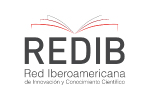TENSIONS BETWEEN INHABITING AND UNINHABITING MEMORY: THE EJIDO OF CUENCA-ECUADOR
El Ejido de Cuenca-Ecuador
DOI:
https://doi.org/10.18537/puc.34.02.01Keywords:
Ejido, Cuenca, historia, paisaje, materialidad, memoriaAbstract
The ‘ejidos’ have deep historical roots in the Hispanic and colonial systems of land tenure, first communal and then parceled. The Ejido of Cuenca is no stranger to this context. This paper follows the historical-cultural processes that influenced the construction of Cuenca's urban landscape from its foundation to the present, in order to analyze and reflect on how The Ejido is currently facing the erosion of the memory and affective links that the inhabitants have woven with this area, despite its declaration as a National Cultural Heritage. To this end, after a journey through the historical geography and landscape that defined the constitution of The Ejido, we delve, through interviews and social mapping, into an understanding of the processes of inhabiting and uninhabiting the memory of this historical area.
Downloads
References
Isla, A. (2002). Los usos políticos de la identidad. Indigenismo y Estado. Editorial de las Ciencias, Buenos Aires.
Alessandri, F. (2014). La ciudad como privación y la reapropiación de lo urbano como ejercicio de la ciudadanía. En XIII Coloquio
Internacional de Geocrítica: el control del espacio y los espacios de control. Barcelona: Universidad de Barcelona.
Recuperado de http://www.ub.edu/geocrit/coloquio2014/Ana%20Fani%20Alessandri%20Carlos.pdf
Assmann, J. (2008). Communicative and cultural memory. En A. Erll y A. Nünning (Eds.), Cultural memory studies: An
international and interdisciplinary handbook (p. 109-118). New York: Walter de Gruyter.
Borrero, Ana Luz. (2006). Cambios históricos en el paisaje de Cuenca Siglo XIX-XX. Revista Procesos. Quito.
Borrero, Ana Luz. (2015). Cuenca en el siglo XIX: Cabildo, Ayuntamiento y Municipio, el tránsito de la ciudad colonial a la republicana. Aspectos de su historia urbana. Revista Pucara. Universidad de Cuenca.
Cordero Palacios, A. (1921). Tres de noviembre: órgano de los intereses municipales del Cantón, secretario municipal del cantón; ordenanzas municipales. Año 2. N°22.
Chacón Zhapán, J; Soto, P y Mora, D. (1993). Historia de la Gobernación de Cuenca (1771-1820), estudio económico y social. Universidad e Cuenca. IDIS.
Chacón Zhapán, J. (1989). Libro de los Cabildos de Cuenca 1880-1805. Banco Central del Ecuador, Cuenca.
Chacón Zhapán, J. (1990). Historia del Corregimiento de Cuenca (1557-1777). Quito: Banco Central del Ecuador.
Dollfus, O. (1991). Territorios Andinos, Lima, IFEA/IEP.
Espinoza, P y Calle, M (2002). La Cité Cuencana: el afrancesamiento de Cuenca en la época republicana (1860-1940). Universidad
de Cuenca.
Carpio Vintimilla, J. (1979). Cuenca, su Geografía Urbana, Cuenca, Editorial López Monsalve. Cuenca.
Halbwachs, M. (1990ª). Los marcos sociales de la memoria. Barcelona: Anthropos.
Hall, Stuart (ed.). (1997). Representation: Cultural Representations and Signifying Practices. London: Sage Publications.
Instituto Nacional de Patrimonio Cultural, Expediente de El Ejido. INPC, Regional 6. 2011.
Jamieson, Ross W. (1999). Domestic Architecture and Power, The Historical Archaeology of Colonial Ecuador. New York: Kluwer Academic/Plenium Publishers. Traducción Ion Youman.
Jaramillo, D. (2004). La traza urbana de Cuenca, en Cuenca Santa Ana de las Aguas. LibriMundi.
Lefebvre, H.(2013). La producción del espacio. Madrid: Capitán Swing. Merisalde y Santiesteban, J. 1992 [1765]. Relación Histórica, Política y Moral de la ciudad de Cuenca. Población y Hermosura de su provincia, en Relaciones Histórico-Geográficas de la
Audiencia de Quito, Tomebamba., editado por Pilar Ponce Leiva, pp. 346-412. Consejo Superior de Estudios Históricos, Madrid, España.
Poloni-Simard, J. 2006. El mosaico indígena: Movilidad, estratificación social y mestizaje en el Corregimiento de Cuenca (Ecuador)
del siglo XVI al XVIII. Abya-Yala.
Piper, Isabel (2009). Investigación y acción política en procesos de memoria colectiva. En Ricard Vinyes (Ed.), El Estado y la
memoria (pp. 151-172). Barcelona: RBA
Rodas, C. Astudillo, S y Rosas J. (2018). En busca del equilibrio entre transformación y conservación. Inserción de proyectos
contemporáneos en ciudades patrimonio de la humanidad. El caso de Cuenca, Ecuador. Arte y Sociedad, Revista de Investigación. N°14.
Terán Zenteno, C. (1947). Índice de la Arquidiócesis de Cuenca, 1919- 1914: Contribución del Comité del Clero a las fiestas del
vigésimo quinto aniversario de la Consagración Episcopal de su Excelencia EL Señor Obispo de la Diócesis, Monseñor
Daniel Hermida, celebradas el 9 de Noviembre. Editorial de J.M. Astudillo Regalado.
Valle, T.d. (2000). Procesos de la memoria: cronotopos genéricos. En: T. del Valle (Ed.), Perspectivas feministas desde la
antropología social (pp. 243-65). Barcelona: Ariel.
Published
Versions
- 2023-12-29 (2)
- 2023-12-29 (1)
How to Cite
Issue
Section
License
Copyright (c) 2024 Elsa Sinchi, Paula Rodas Espinoza

This work is licensed under a Creative Commons Attribution-NonCommercial-ShareAlike 4.0 International License.
Copyright © Autors.

You are free to:
 |
Share — copy and redistribute the material in any medium or format |
 |
Adapt — remix, transform, and build upon the material for any purpose, even commercially. |
Under the following conditions:
 |
Attribution — You must give appropriate credit, provide a link to the licence, and indicate if changes were made. You may do so in any reasonable manner, but not in any way that suggests the licenser endorses you or your use. |
| NonCommercial — You may not use the material for commercial purposes. | |
| ShareAlike — If you remix, transform, or build upon the material, you must distribute your contributions under the same license as the original. |
| No additional restrictions — You may not apply legal terms or technological measures that legally restrict others from doing anything the licence permits. |












